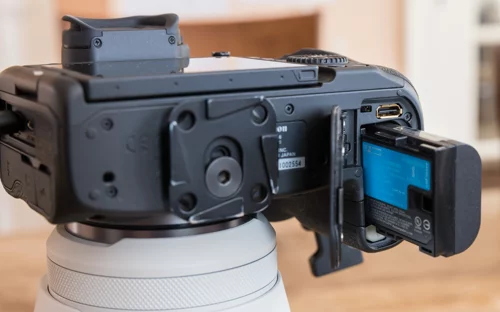The new Canon f/4 version of its RF 70-200 is just that – a smaller, narrower version of its excellent f/2.8 standard telephoto zoom. But it is, in all respects but for maximum aperture, just as good. The early leaks included MTF charts suggesting image quality so good as to question their validity. But, nope; the lens, in hand at the Camnostic office, is showing to be really as good as the chart suggests.
Copies were first sent out yesterday, with the first recipients getting theirs today. Supply does not seem to be constrained, as orders from the day before were sent out Thursday.

Particularly impressive is the corner performance at 200mm. It is almost exactly the same sharpness as the Canon EF 200mm f/2.8L II prime in the far corners, although that older lens was measured at f/2.8. Point is, sharpness isn’t going to be a concern.
The image stabilization is notably good, showing 2/3rds to 3/4ths of shots being sharp at 200mm at 1/5th of a second exposure hand-held. About a third were sharp at 1/4th of a second and things completely fell apart after that. This translates roughly to 6.5 stops in combination with the R5 or R6 (we tried both). Canon rated it for “up to 7.5 stops,” when combined with the camera’s IBIS system. This is close to its best ever. Canon has made only five designs that have 8 stops (one of which is the RF 70-200 f/2.8, although it performed no differently than the new f/4 in our own tests).
The size is, indeed, pretty small, but perhaps not quite so thin as the “Coke can,” form factor someone suggested. but it’s close. It does this in part by copying the f/2.8’s feature of using a telescoping mechanism, allowing it to fold into itself when zoomed to shorter focal lengths.

Had Canon not come out with the f/2.8 RF zoom first, the size of the f/4 lens would likely hit the market with more of a stir. As it is, pictured above, it is significantly smaller than the f/2.8, but – due to that lens’s telescoping design – its thunder has been stolen.
This new lens is the first f/4 70-200 made by Canon to have image stabilization mode 3 – the IS variant that activates only as a picture is being taken.
The lens sells for $1,600.

 Tilt Shift Calculator
Tilt Shift Calculator POWERING THE EOS R5
POWERING THE EOS R5 R5 Portal
R5 Portal Camera
Camera Lens
Lens Batteries
Batteries Memory Cards
Memory Cards

